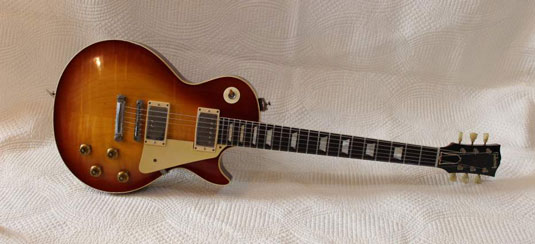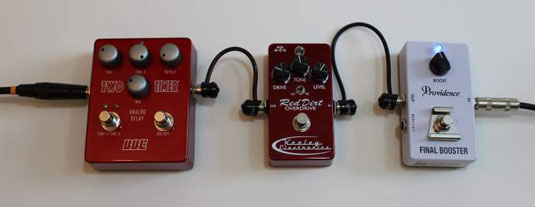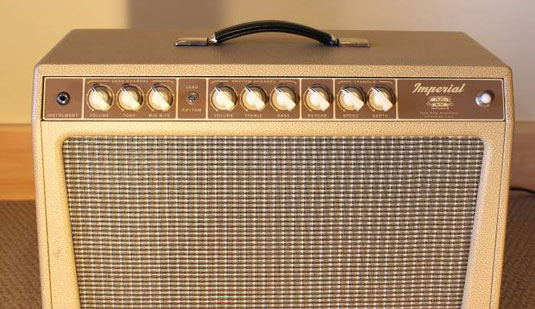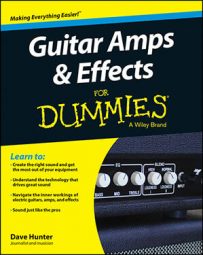The signal chain that works to create any electric guitar sound is made up of several major building blocks, each of which has lots of smaller building blocks within it. These main ingredients that influence your sound include your guitar, any effects pedals you use, and your amp.
Electric guitar

In addition to being a musical instrument in the pure sense, your electric guitar is a signal generator: It produces the small electrical signal that carries the “sound” of your playing all the way to an amplifier. Without the help of the other parts of the chain, an electric guitar doesn’t make much of a sound on its own, or at least not one that anyone would consider great music.
Try to start thinking of your electric guitar as a device that produces an electrical signal. Now envision that signal as it travels down the wire from stage to stage, being treated and conditioned by different circuits along the way. What finally comes out the speaker is likely to be very different than what came out the guitar’s output jack when you first picked a note.
Still, this is where it all starts, and the way in which your guitar generates its signal influences everything else down the line, in addition to everything else influencing it.
Effects pedals

Effects pedals are relatively compact, individual boxes housing circuitry that treats — or effects — your guitar signal in one way or another. They generally have a few knobs with which to control their parameters and volume levels, and a footswitch that you step on to turn them on and off.
They also require some form of power to make them work, which is often supplied by a 9-volt battery or by an adaptor that plugs into the wall.
Guitar amp

Your amp is where it all gets louder — in effect, where the signal is translated back into sound waves in the air that your listener can hear — but even at this seemingly final stage, plenty more happens to your sound than just the “gets louder” part of the equation.
The circuitry within most guitar amps contains several stages that shape your guitar signal in a variety of ways, one after the other, and much of this alters and enriches your guitar tone, above and beyond merely amplifying it.
As your signal finally comes out through the speaker, completing its long journey from the guitar, what started as a pure, white beam of light it is now a bold, multidimensional rainbow. It is much enhanced from the condition in which it started its journey, and even what comes out of the amplifier is considerably different than what went in — very different than it would look if it had just been processed by a simple, clinical “make it louder machine.”
Your signal is now truly the culmination of everything that has happened to it from guitar to speaker; and if you have been considerate in your selection and use of all of those little links in the chain, it sounds a lot better, too.

